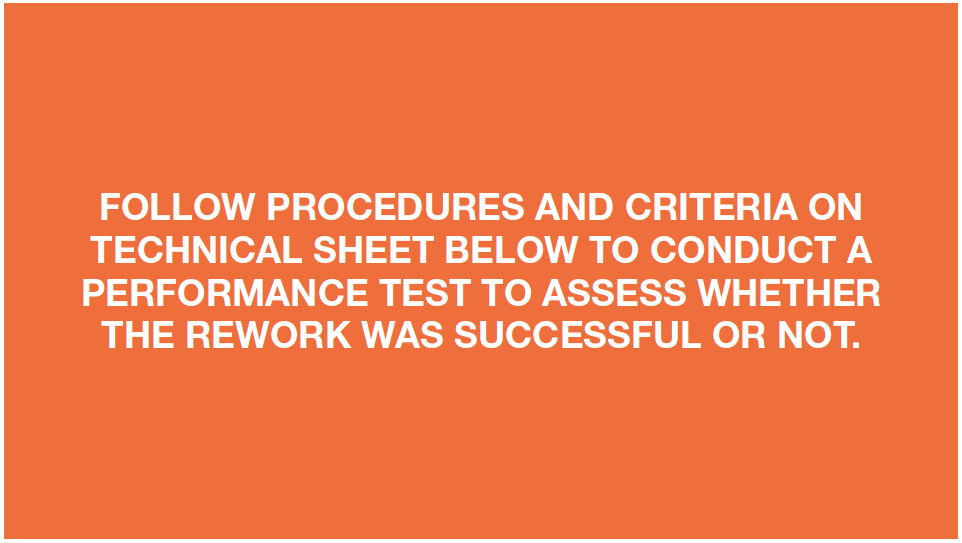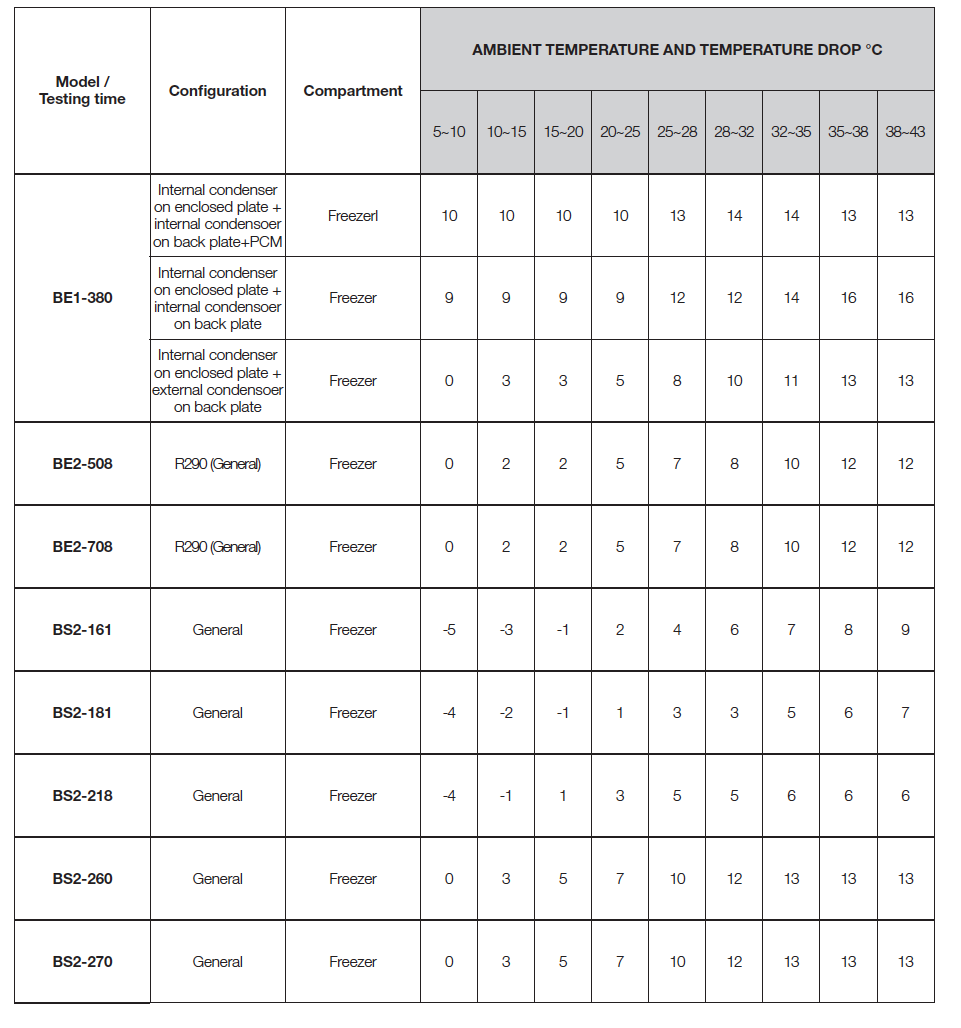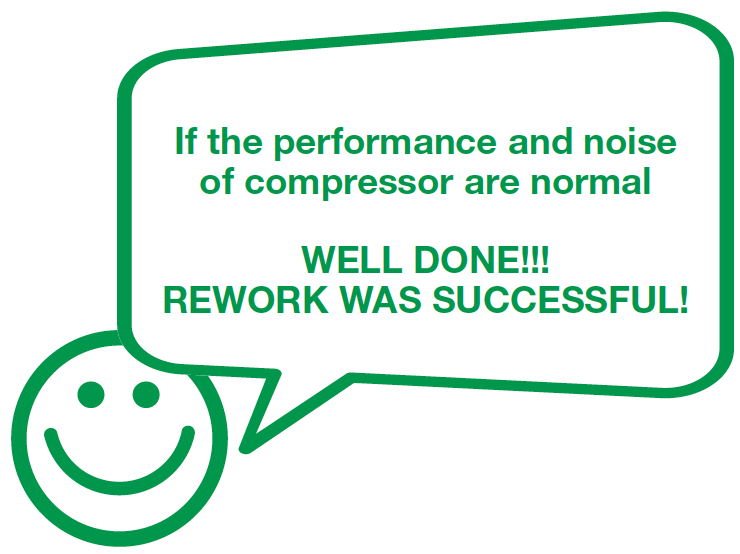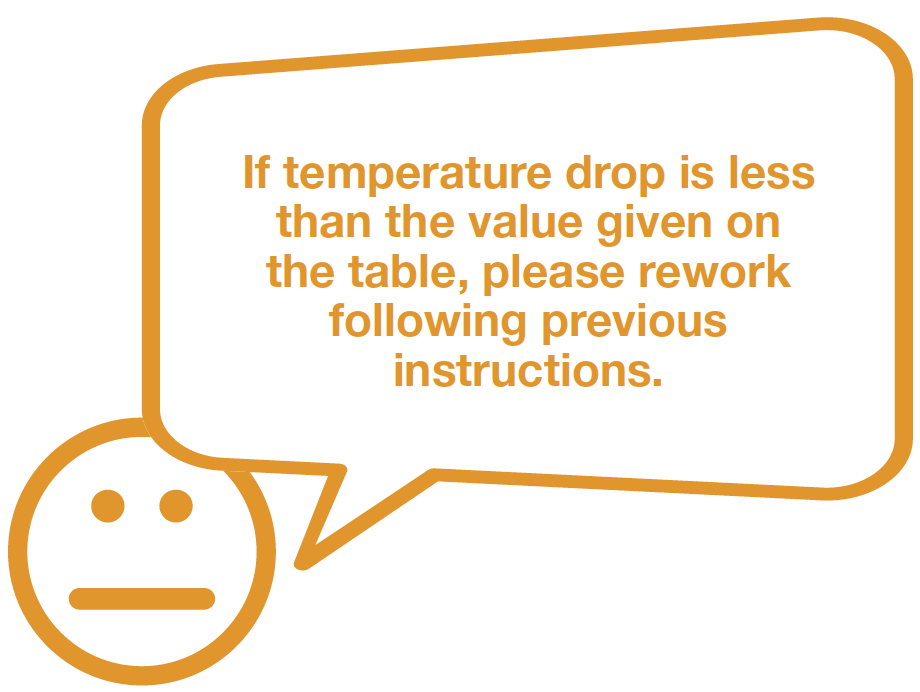

CHECK AND TEST 1
When listening, the compressor is clearly louder than normal.
If you hold compressor firmly with your hand, the noise can be reduced.

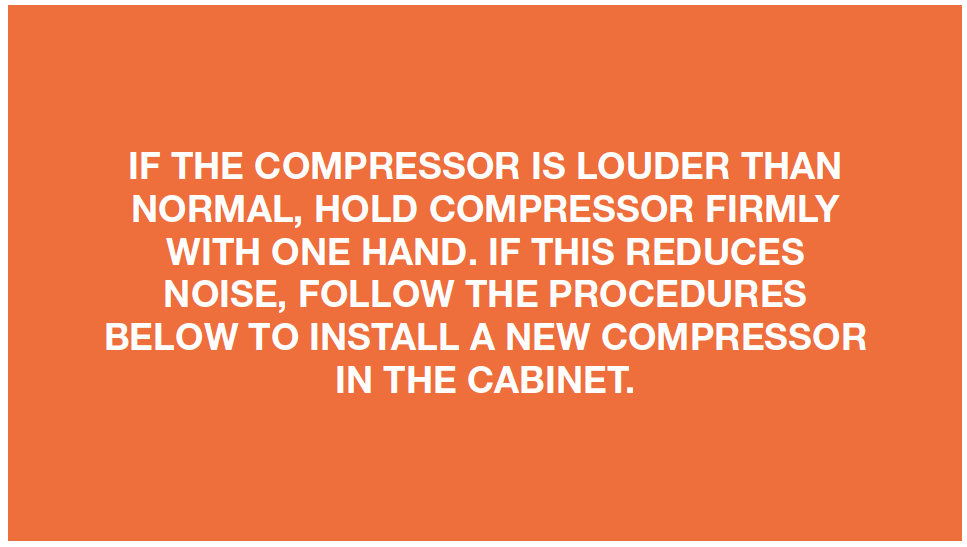

PROCEDURE 1
Step 1
Discharge refrigerant. Cut charging tube off with pliers.

Step 2
Discharge all refrigerant toward the exhaust vent.
Step 3
Cut off suction pipe and exhaust pipe.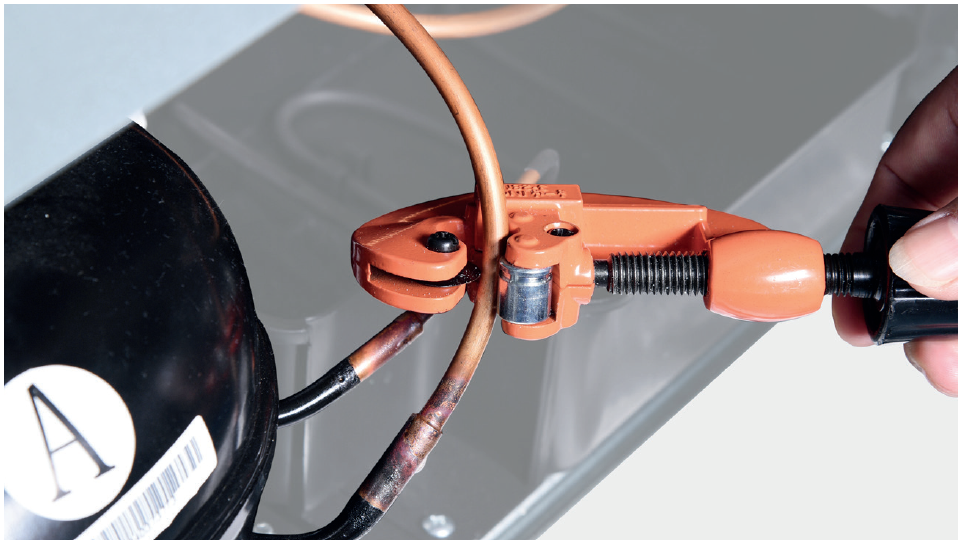
Step 4
Unscrew terminal cover.
Step 5
Remove terminal cover.
Step 6
Remove protector and starter.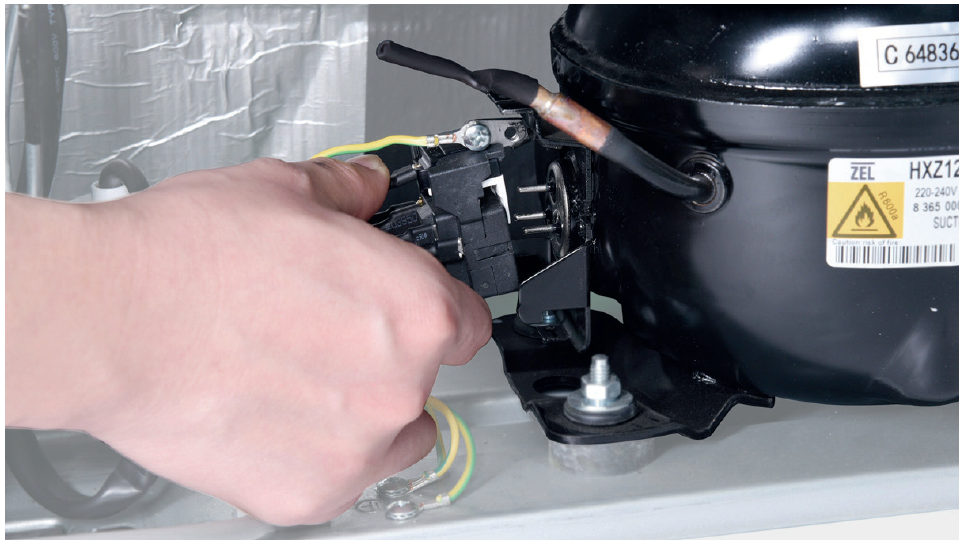
Step 7
Unscrew earthing wire.
Step 8
Unscrew nut on compressor.
Step 9

Step 10
Braze the joints of suction and exhaust pipes.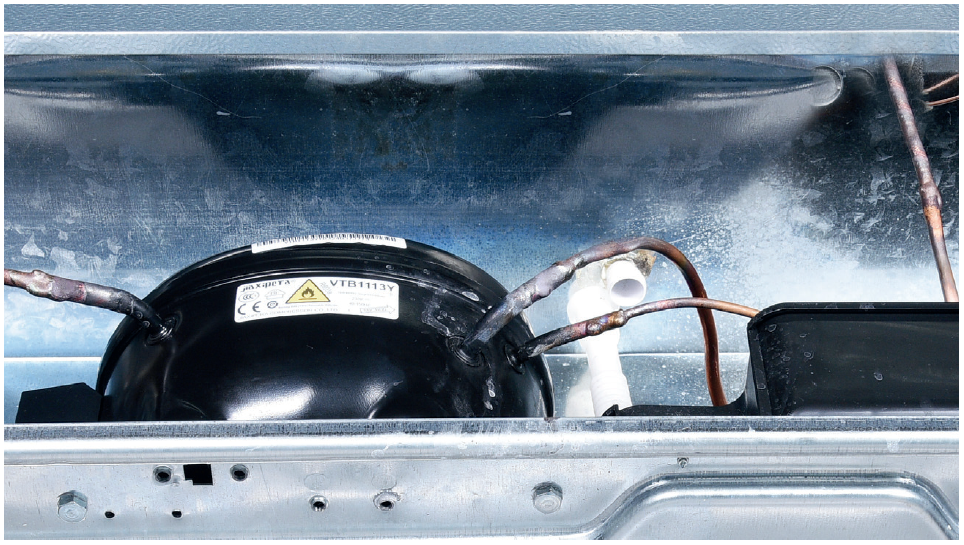
Step 11
Re-braze a copper tube onto compressor processing tube.
Step 12
Install quick connector onto re-brazed pipe.
Step 13
Melt brazing material with flame and pull out processing tube with pliers.
Step 14


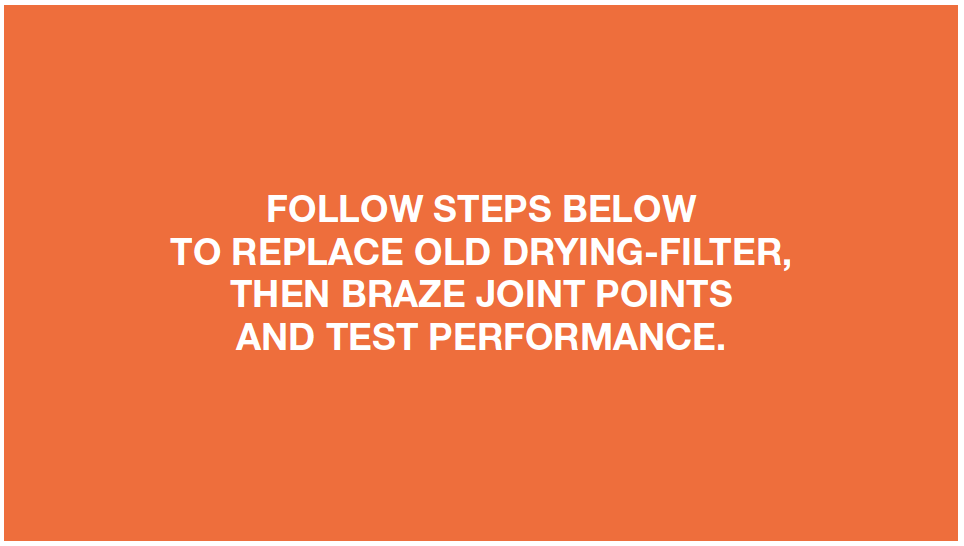
Step 1
Clean paint off brazed joint of drying-filter.
Step 2
Cut off drying-filter.
Step 3
Cut off capillary and remove the cut end by shaking.
Step 4

Step 5
Inject nitrogen (1.57Mpa) through quick connector into pipe for at least 3 min to blow remaining refrigerant away.
Step 6
Add quick connector onto processing pipe of drying-filter.
Step 7

Step 8
Vacuum and recharge. Please get more details of vacuuming and gascharging requirements on 10.5 Annex B2.

Step 9
Block processing pipe twice with locking pliers.
Step 10
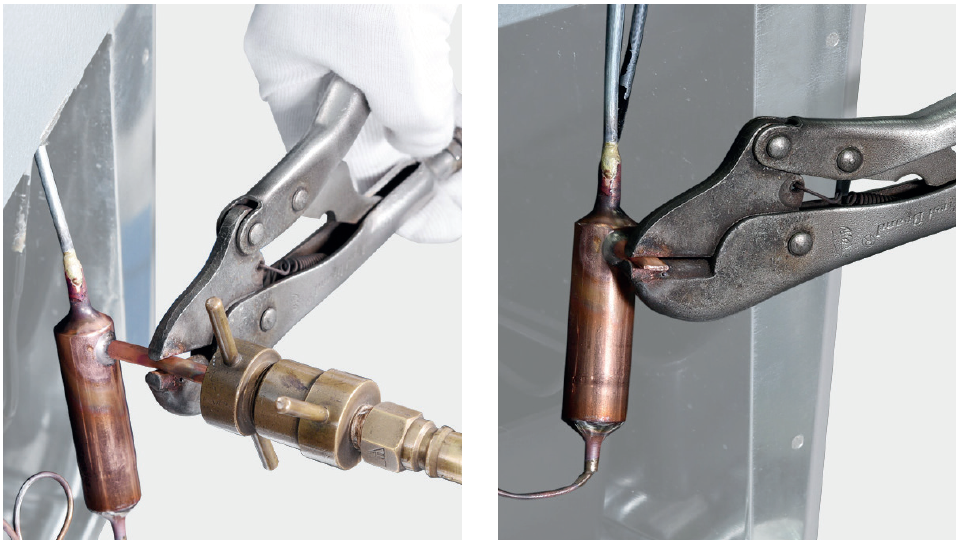
Step 11
Braze the ends and remove the pliers.

